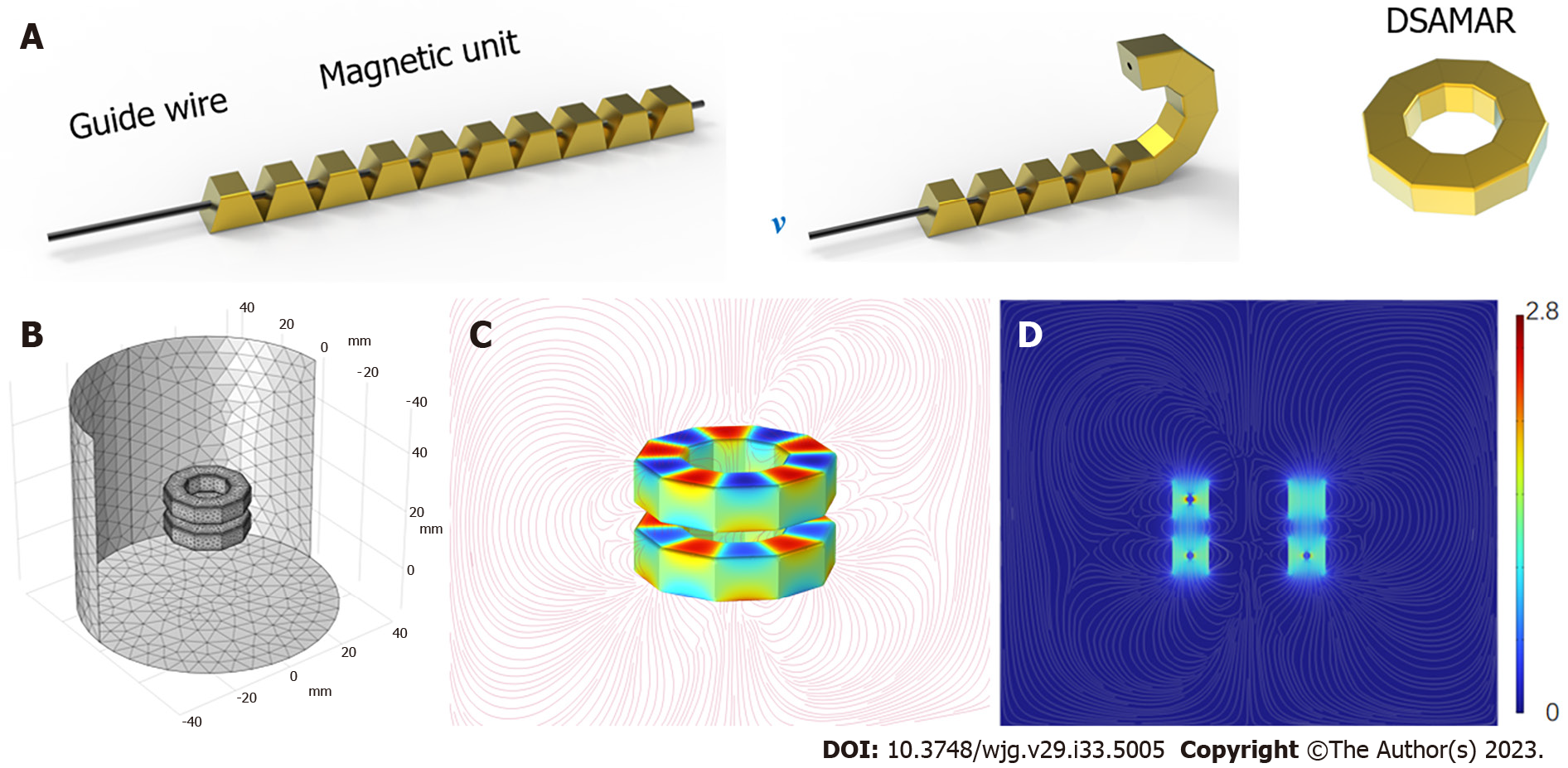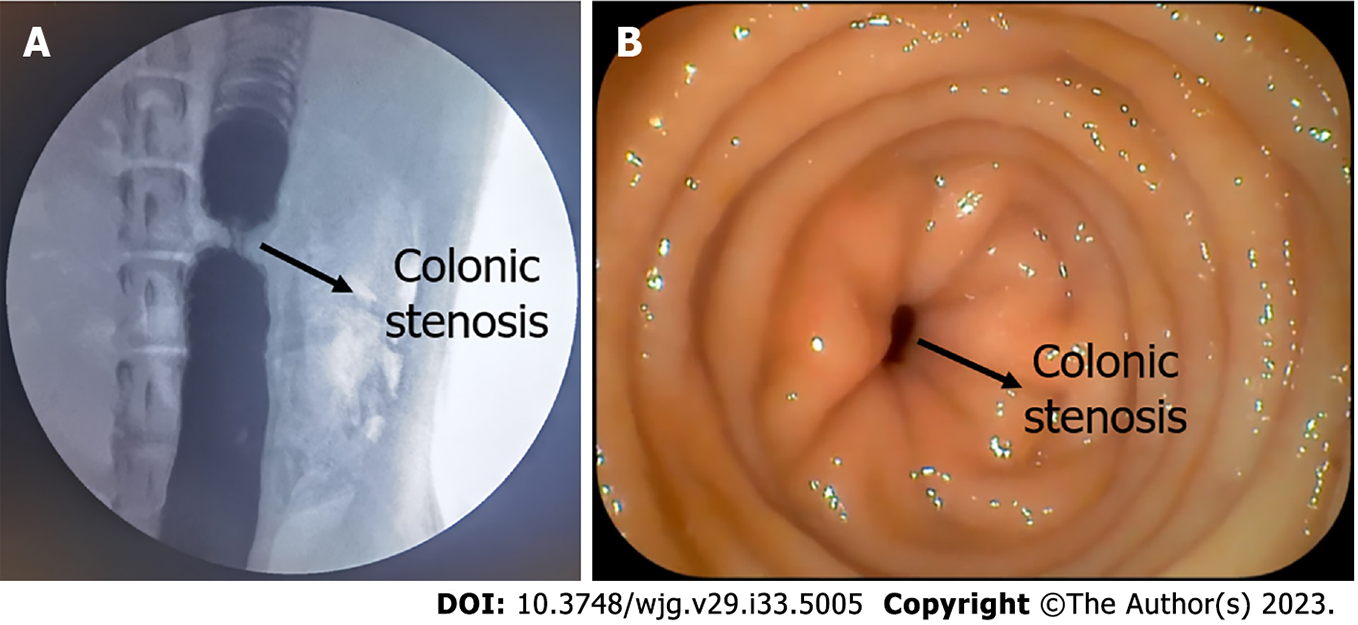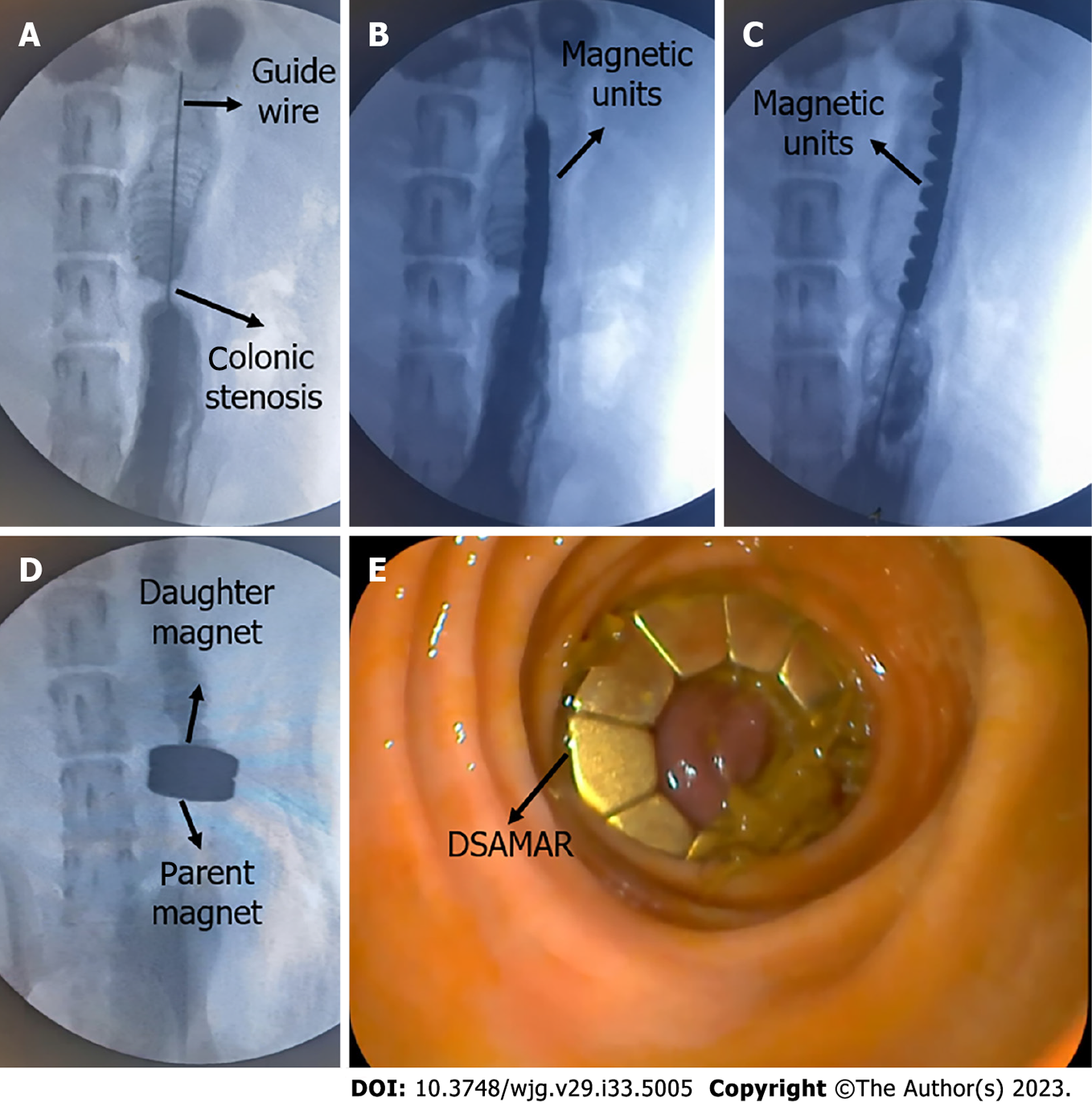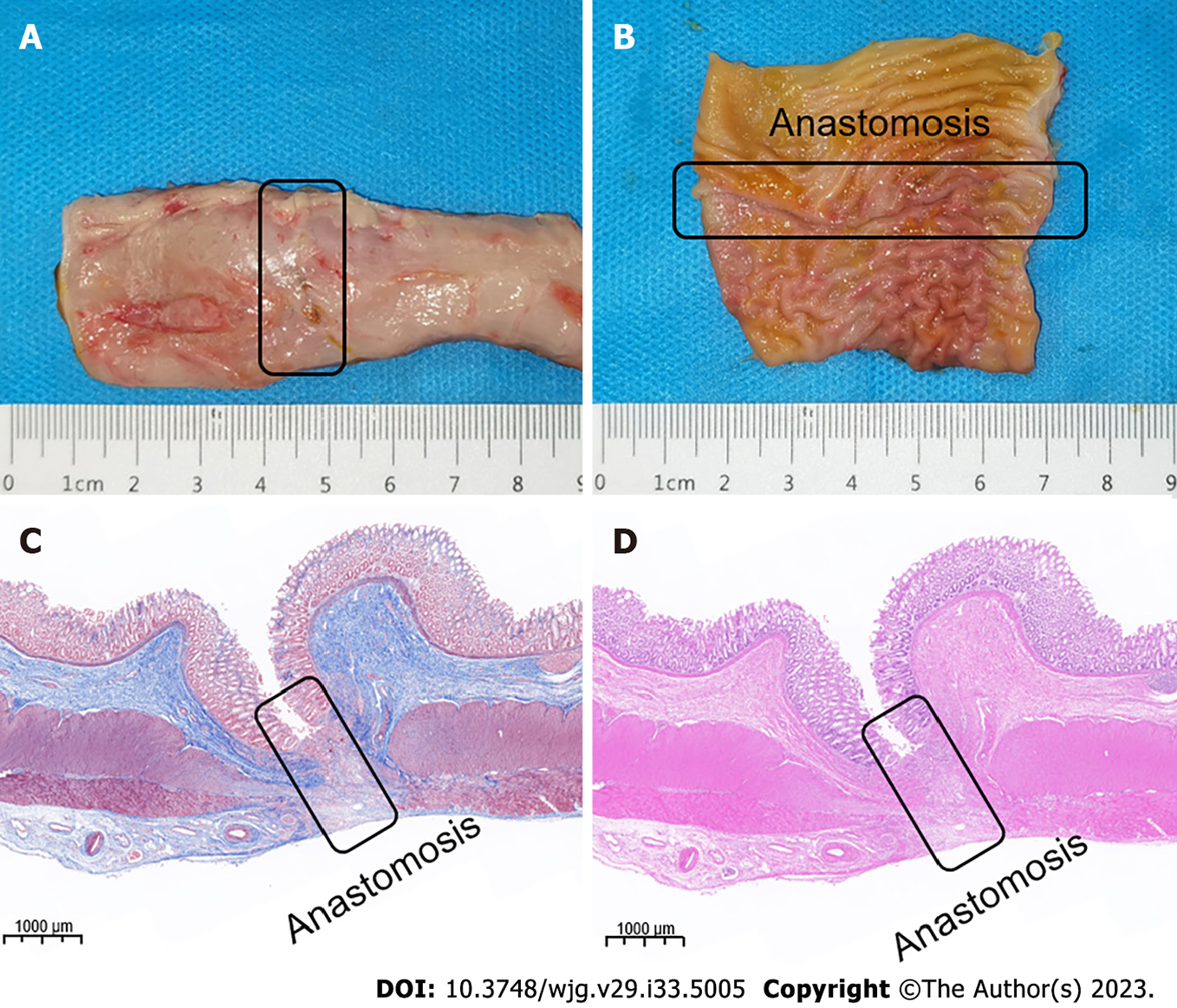Copyright
©The Author(s) 2023.
World J Gastroenterol. Sep 7, 2023; 29(33): 5005-5013
Published online Sep 7, 2023. doi: 10.3748/wjg.v29.i33.5005
Published online Sep 7, 2023. doi: 10.3748/wjg.v29.i33.5005
Figure 1 A schematic of the deformable self-assembled magnetic anastomosis ring.
A: Transformation of the deformable self-assembled magnetic anastomosis ring from a linear structure to a ring; B to D: Computer simulation of magnetic flux density. DSAMAR: Deformable self-assembled magnetic anastomosis ring.
Figure 2 Colonic stenosis model.
A: Colonic stenosis as seen by colonography; B: Colonic stenosis as seen by colonoscopy.
Figure 3 Animal experiment process.
A: Hard guide wire passes through the stenosis into the proximal colon; B: Linear deformable self-assembled magnetic anastomosis ring (DSAMAR) passes through the narrow segment of the colon; C: DSAMAR enters the proximal colon completely; D: Magnetic rings at both ends of the narrow colon were attracted to each other; E: DSAMAR in the distal colon as seen by colonoscopy.
Figure 4 Magnetic compression anastomosis was established.
A to C: Deformable self-assembled magnetic anastomosis rings expelled from the body; D: Magnetic compression anastomosis as seen by colonoscopy; E: Colonography showed good patency of the colon.
Figure 5 Magnetic compression anastomosis specimen.
A: Serous surface of the anastomosis; B: Colonic anastomosis seen on mucosal surface; C: Masson’s staining of anastomosis; D: Hematoxylin and eosin staining of anastomosis.
- Citation: Zhang MM, Zhao GB, Zhang HZ, Xu SQ, Shi AH, Mao JQ, Gai JC, Zhang YH, Ma J, Li Y, Lyu Y, Yan XP. Novel deformable self-assembled magnetic anastomosis ring for endoscopic treatment of colonic stenosis via natural orifice. World J Gastroenterol 2023; 29(33): 5005-5013
- URL: https://www.wjgnet.com/1007-9327/full/v29/i33/5005.htm
- DOI: https://dx.doi.org/10.3748/wjg.v29.i33.5005













